In our recent collaboration with a large governmental organization, we embarked on a significant change management initiative aimed at professionalizing defense procurement. The journey spanned three phases: Assessing, Solutioning, and Implementation. Throughout each phase we realized the power of collective problem solving which ensured the workforce was engaged and invested in the transformation from the beginning.
 Phase I: Assessing During the Assessing phase, we conducted extensive qualitative assessments, including interviews and focus groups with various stakeholder groups. This approach helped us gather in-depth insights into the organization’s current state and the challenges faced by its workforce. One striking example of the power of collaboration was the identification of a critical problem that was not on leadership’s radar: the lack of understanding of the entire process map. Employees only understood their specific roles, not how their tasks fit into the larger process. This gap highlighted the need for a more integrated and holistic approach to change.
Phase I: Assessing During the Assessing phase, we conducted extensive qualitative assessments, including interviews and focus groups with various stakeholder groups. This approach helped us gather in-depth insights into the organization’s current state and the challenges faced by its workforce. One striking example of the power of collaboration was the identification of a critical problem that was not on leadership’s radar: the lack of understanding of the entire process map. Employees only understood their specific roles, not how their tasks fit into the larger process. This gap highlighted the need for a more integrated and holistic approach to change.
 Phase II: Solutioning In this phase, we leveraged the Change Agent Network to facilitate collaborative problem-solving. This network acted as a bridge between leadership and the workforce, ensuring continuous feedback and idea flow. We used leadership goals as our north star but relied heavily on collaboration with the workforce to determine the best paths to achieve these goals. We saw immediate impacts, such as increased investment in the change process and the surfacing of previously unrecognized barriers to success. By involving employees in creating solutions, we built trust and commitment, essential for overcoming resistance and fostering a culture of continuous improvement.
Phase II: Solutioning In this phase, we leveraged the Change Agent Network to facilitate collaborative problem-solving. This network acted as a bridge between leadership and the workforce, ensuring continuous feedback and idea flow. We used leadership goals as our north star but relied heavily on collaboration with the workforce to determine the best paths to achieve these goals. We saw immediate impacts, such as increased investment in the change process and the surfacing of previously unrecognized barriers to success. By involving employees in creating solutions, we built trust and commitment, essential for overcoming resistance and fostering a culture of continuous improvement.
 Phase III: Implementation Despite the size of the organization, which typically slows down change, our collaborative approach significantly mitigated resistance. By involving everyone from the start, we ensured that aspects that usually impede progress were barely a blip on the radar. The most profound outcome was the sustained success of the initiative. Even after our support contract ended, employees continued to drive the change and follow through on the plan. The level of buy-in and momentum built through collaboration was so strong that the workforce was able to lead the change themselves, despite being overworked.
Phase III: Implementation Despite the size of the organization, which typically slows down change, our collaborative approach significantly mitigated resistance. By involving everyone from the start, we ensured that aspects that usually impede progress were barely a blip on the radar. The most profound outcome was the sustained success of the initiative. Even after our support contract ended, employees continued to drive the change and follow through on the plan. The level of buy-in and momentum built through collaboration was so strong that the workforce was able to lead the change themselves, despite being overworked.
Long-term Successes The long-term advantages of our approach were evident. The organization not only achieved its immediate goals but also fostered a culture of trust and empowerment. Employees were motivated to continue the transformation journey, addressing barriers and driving success independently. This case underscores the importance of collaboration in change management. By giving employees a voice and a role in the change process, we turned them into champions of the change, ensuring both immediate and sustained success.
This story of a large governmental organization highlights how powerful collaborative problem-solving can be in creating an engaged and invested workforce. It demonstrates that even in complex and resistant environments, involving the workforce from the beginning can lead to remarkable and enduring transformation.



